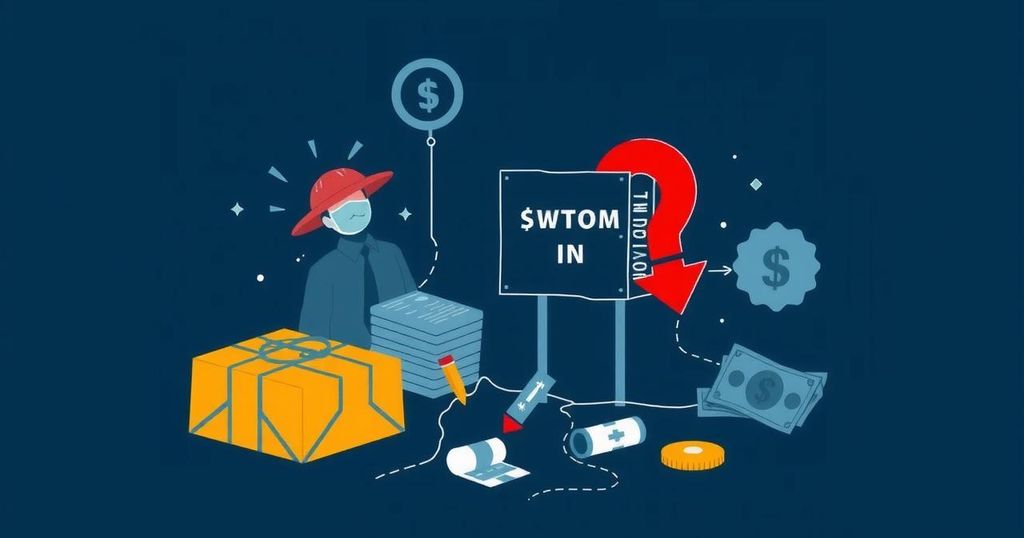GiveDirectly is providing $1,000 payments to 1,000 households affected by Hurricanes Helene and Milton, utilizing AI for targeted aid distribution. The initiative aims to streamline the aid process through a smartphone app, empowering individuals to decide their immediate needs while also recognizing the model’s limitations in reaching all who require assistance.
The nonprofit organization GiveDirectly is initiating a program to distribute direct payments of $1,000 to approximately one thousand households affected by Hurricanes Helene and Milton in North Carolina and Florida. This novel approach to disaster aid employs an artificial intelligence tool developed by Google to identify regions with significant poverty and storm damage. Recipients will be able to enroll for assistance via a smartphone application commonly used for managing SNAP and other government benefits, allowing for an expedited and dignified delivery of aid. On October 31, 2024, eligible households will receive funds directly through the app’s debit card system. Laura Keen, Senior Program Manager at GiveDirectly, emphasized that this method minimizes the application burden on individuals, empowering them to make autonomous choices regarding their immediate needs. Although this strategy will not reach everyone in need, the organization aspires to establish a model that facilitates quicker and more effective disaster response funds. Historically, GiveDirectly has implemented cash assistance programs in regions worldwide, having first trialed such efforts in the U.S. post-Hurricane Harvey in 2017. The organization relies on Google’s machine learning technology to analyze aerial imagery and poverty data, efficiently targeting the most devastated areas. Despite the program’s advancements, challenges remain, particularly in identifying low-income households not currently receiving government benefits or those without access to technology. Furthermore, the limitations of growing reliance on smartphone applications raise concerns amid ongoing power outages in certain regions post-disaster, highlighting the need for potentially combining remote enrollment with traditional methods. As of now, GiveDirectly has secured $1.2 million for the initiative but recognizes the model’s constraints in assisting all affected individuals. Meanwhile, the Federal Emergency Management Agency (FEMA) has also updated its Serious Needs Assistance program, increasing payments while eliminating prior restrictions. Experts have noted that an adaptive approach could streamline eligibility verification and aid distribution, drawing from successful practices like the expanded child tax credit. Research suggests that cash assistance programs significantly benefit households, enabling recipients to prioritize their unique needs during recovery. Long-term unconditional assistance, exemplified by successful aid programs following other U.S. disasters, has proven to be particularly transformative, offering stability and resilience for the future.
In the wake of natural disasters, traditional aid often comes in the form of in-kind donations (like food and clothing), which, while helpful, may not address all the varied needs of affected individuals and families. Recognizing this gap, organizations like GiveDirectly have begun to explore cash transfer models as a more effective way to deliver disaster relief. Direct cash payments allow beneficiaries the flexibility to allocate resources according to their specific circumstances, which is especially important in the aftermath of major disruptions like hurricanes. This approach has gained traction globally, prompting GiveDirectly to adapt its methodology to the U.S. context, leveraging technology to enhance targeting and efficiency in delivering aid.
To conclude, GiveDirectly is pioneering a direct cash assistance initiative aimed at strengthening disaster relief efforts for survivors of Hurricanes Helene and Milton. Utilizing advanced AI technology and a streamlined enrollment process, the organization seeks to empower recipients by allowing them to address their individual needs effectively. While this innovative program has its challenges, it represents a significant shift towards more responsive and adaptable disaster aid models that could inform future practices in the sector. As new funding and strategies are explored, the potential for fostering resilience and sustained recovery for affected individuals remains a pivotal focus.
Original Source: www.inc.com






